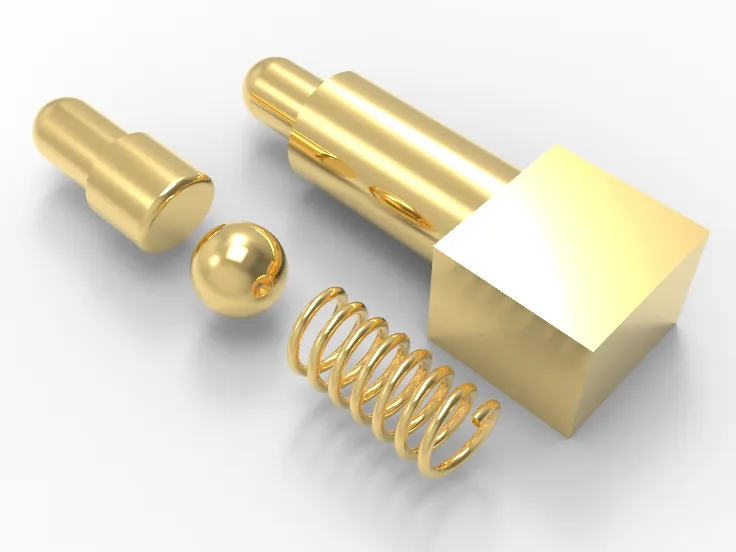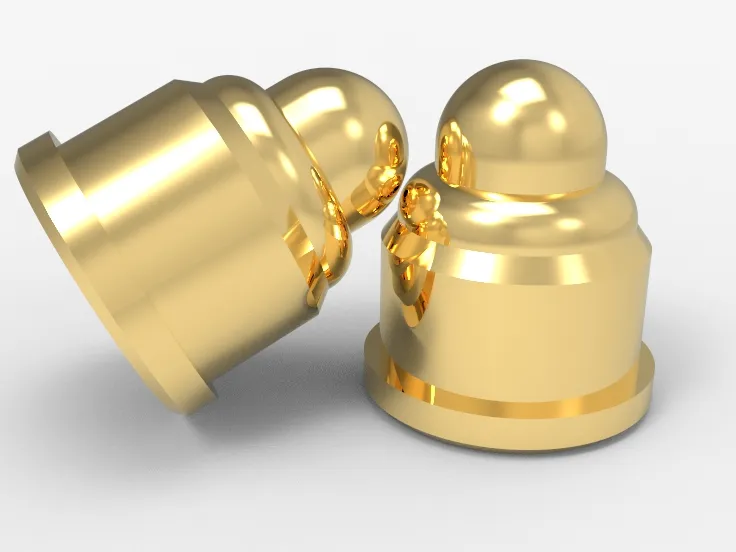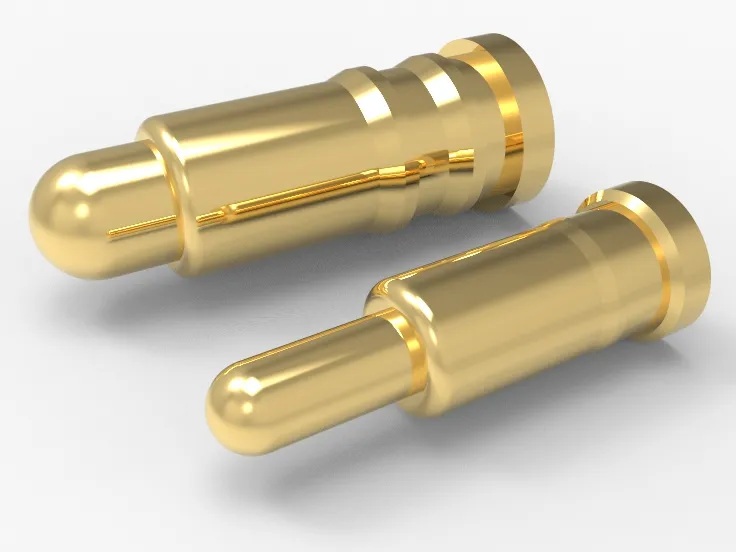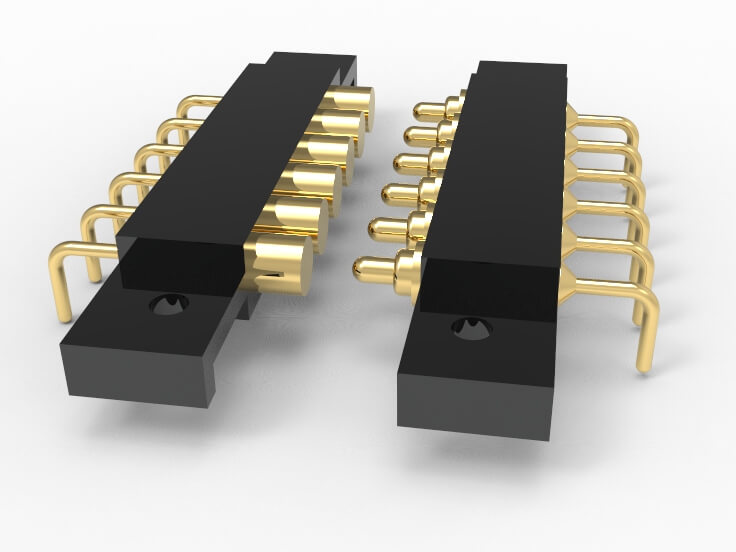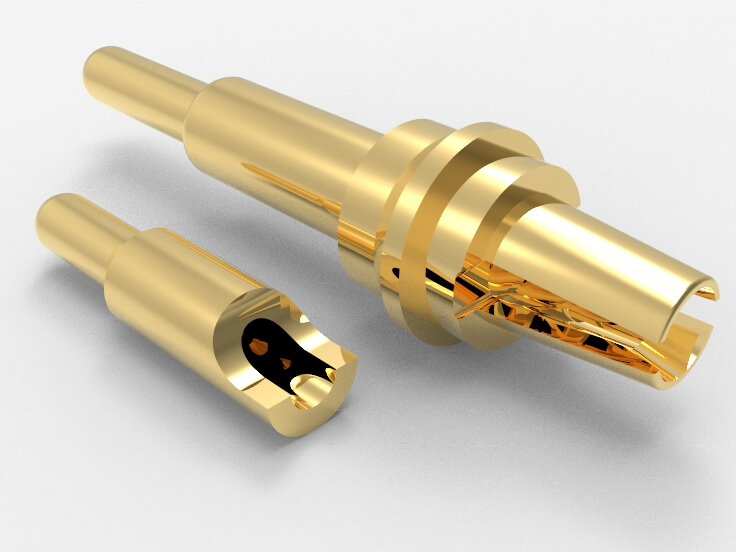Discover the ultimate guide to Pogo pin types for your device! Explore how to find the perfect fit with our comprehensive breakdown
1. Introduction:
In modern electronic devices, Pogo Pins play a crucial role as a key connection technology. However, with advancing technology and diverse applications, choosing the right type of Pogo Pin for your device has become increasingly complex and critical.
This article delves into the importance of Pogo Pin types and the challenges in their selection process, offering practical advice to decode various types and find the best fit for your equipment. Whether you’re a designer, engineer, or business owner, this article provides essential guidance to ensure optimal connectivity performance and reliability for your devices.
2. What are Pogo Pins?
Pogo pins, which are also called spring-loaded contacts, are small electrical connectors composed of a spring, plunger, and barrel. They achieve electrical connection through compression and rebound of the spring. Pogo Pins usually feature single or multiple points of contact, providing stable connections for power, signal, or data transmission between devices.
2.1 Defining Pogo Pins and their basic functions: The basic functions of Pogo Pins include:
- Electrical connection: Ensuring your devices stay powered, transmit signals, or exchange data reliably.
- Mechanical connection: Using spring properties to maintain mechanical connection, adapting to slight positional changes between devices.
- Durability: Pogo Pins are highly durable and long-lasting, thanks to their resilient spring construction.
- Space efficiency: Compared to traditional sockets, Pogo Pins are compact, enabling high-density connections in limited space.
2.2 Explaining the application and importance of Pogo Pins in electronic devices: Pogo Pins are widely used in electronic devices, notably in:
- Device connections: Used in smartphones, tablets, e-readers, and wearable devices for charging ports and data transfer.
- Reliability: Their spring structure and stable contact performance ensure reliable electrical connections, reducing device failures or data transmission errors caused by poor contact.
- Design flexibility: Designers and engineers can choose different types of Pogo Pins based on specific device requirements, facilitating flexible design layouts and optimized space utilization.
3. Common types of Pogo Pins:
3.1. Surface Mount (SMT Pogo Pins):
- Feature: Directly mounted on PCB surface pads without through-holes.
- Advantages: Simplifies PCB design, saves space, suitable for high-density layouts.
- Disadvantages: Relatively lower carrying capacity.
- Applications: Suitable for small electronic devices like wearables and headphone charging ports.
3.2. Through-Hole (Through Hole Pogo Pins):
- Feature: Installed through PCB holes for higher connection reliability.
- Advantages: Strong carrying capacity, ideal for applications requiring reliable connections.
- Disadvantages: Requires PCB space for hole reservations.
- Applications: Suitable for industrial control and medical devices requiring high stability connections.
3.3. High Current (High Current Pogo pins):
- Feature: Designed for transmitting large currents, with larger contact areas and stronger spring force.
- Advantages: Suitable for high-power devices and fast charging needs.
- Disadvantages: Larger size, not suitable for small devices.
- Applications: Used in power tools, electric vehicles for charging ports, and power transmission interfaces.
3.4. Double-Ended (Double Ended Pogo Pin):
- Feature: Contacts at both ends for bidirectional signal or power transmission.
- Advantages: Solder-free, flexible connection and wiring.
- Disadvantages: High design and wiring complexity.
- Applications: Used in data transmission devices, test instruments requiring bidirectional connections.
3.5. Solder Cup Type (Solder Cup Pogo Pin):
- Feature: Directly soldered to PCBs or wiring for simple connection.
- Advantages: Easy to use, suitable for manual soldering and small batch production.
- Disadvantages: Requires high soldering technology and quality.
- Applications: Suitable for small electronic devices requiring simple connections and quick assembly.
3.6. Right Angle Type (Right Angle Pogo Pin):
- Feature: Mounted on the side of PCBs, saving space and providing lateral connections.
- Advantages: Suitable for designs with special layout requirements.
- Disadvantages: May be limited by space and design complexity of side mounting.
- Applications: Used in compact devices like smartphones and tablets requiring lateral connections.
3.7. Bent Type (Bending Pogo Pin):
- Feature: Connection part can bend to change connection angles. Many clients also call it Right Angle Pogo Pin.
- Advantages: Highly adaptable, solves connection angle limitations.
- Disadvantages: High design complexity.
- Applications: Suitable for devices requiring adjustable connection angles, such as automotive electronics and industrial automation equipment.
3.8. Threaded Type (Threaded Pogo Pins):
- Feature: Head, body, or bottom with threads for screw-fixed installation.
- Advantages: Provides additional fixing and stability.
- Disadvantages: Requires corresponding threaded hole design on the device side.
- Applications: Used in devices needing additional fixed support, such as wall-mounted displays, handheld mobile devices, and industrial instruments.
4. How to choose the right Pogo Pin type for your device?
Choosing the appropriate Pogo Pin type involves several key factors, including device design requirements, electronic connection needs, and anticipated usage environments. Here are key factors for selecting Pogo Pin types and recommendations:
4.1. Device design requirements:
- Space constraints: Consider internal device space and layout. For limited space, consider Surface Mount or Side Mount Pogo Pins to save space and achieve compact design layouts.
- Connection method: Determine the required connection method, such as single or bidirectional connection, and the connection angle and position. Double-Ended, Bent Type, or Threaded Type Pogo Pins are suitable for devices needing flexible connection methods.
4.2. Electronic connection requirements:
- Current and signal transmission: Select the appropriate Pogo Pin based on device power requirements and signal transmission needs. High Current Pogo Pins are suitable for high-power devices and fast charging needs, while Surface Mount or Through-Hole Pogo Pins are suitable for applications where signal transmission is critical.
4.3. Application environment and special requirements:
- Environmental conditions: Consider device usage conditions, such as temperature, humidity, and vibration. Choose Pogo Pins with high temperature resistance, waterproof, or dustproof features to ensure reliability and stability in harsh environments.
- Special requirements: If the device requires additional fixed support or specific installation methods, consider Threaded Type or Bent Type Pogo Pins to meet special design requirements.
4.4 Selection recommendations and tips:
- Comprehensive consideration: Based on specific device requirements, consider space, current transmission, connection method, and environmental factors to choose the most suitable Pogo Pin type.
- Sample testing: Before bulk purchase, test samples to verify that selected Pogo Pins meet device performance and reliability requirements.
- Communicate with Johoty: Talk with China’s top Pogo Pin manufacturer Johoty, discuss equipment design requirements and expected usage scenarios in detail, get professional advice on selection, and technical support.
5. Application Cases and Success Stories of Pogo Pin Types
5.1. Smart Wearable Devices
- In smart wearable devices, surface-mount Pogo Pins are widely used in charging ports. For example, Fitbit smart wristbands use surface-mount Pogo Pins for fast charging and reliable power connection, enhancing user experience and product reliability.
5.2. Industrial Control Equipment
- Through-hole Pogo Pins have prominent applications in industrial control equipment. For instance, automated robots and industrial control panels often use through-hole Pogo Pins for reliable signal transmission and power connection solutions, ensuring stability and durability in high-vibration and harsh environments.
5.3. Power Tools and Charging Equipment
- High-current Pogo Pins play a critical role in power tools and charging devices. For instance, electric vehicle charging ports use high-current Pogo Pins for fast charging and high-power transmission, improving charging efficiency and user convenience.
5.4. Medical Devices
- Dual-head Pogo Pins have successful applications in medical devices. For example, some portable medical testing devices use dual-head Pogo Pins for data transmission and power connection, ensuring compact design and efficient performance.
5.5. Automotive Electronics
- Bent and threaded Pogo Pins find extensive application in automotive electronics due to their versatility and reliability. For example, car navigation systems and in-car entertainment systems use bent Pogo Pins for connections, adapting to complex interior layouts and environmental conditions, providing stable and reliable electronic connection solutions.
Companies or Products Successfully Using Pogo Pin Solutions
- Fitbit (Smart Wearable Devices): Enhanced charging efficiency and product reliability using surface-mount Pogo Pins, loved by consumers.
- Tesla (Electric Vehicles): Successfully adopted high-current Pogo Pins in their electric vehicle charging ports, supporting fast charging and high-power transmission, enhancing the charging experience.
- Medtronic (Medical Devices): Used dual-head Pogo Pins in portable medical testing devices for reliable data transmission and compact design, bringing innovative solutions to the medical industry.
- Bosch (Industrial Control Equipment): Widely adopted through-hole Pogo Pins in automated robots and industrial control panels, ensuring stable operation in high-vibration and harsh environments, improving production efficiency and product reliability.
- BMW (Automotive Electronics): Used bent and threaded Pogo Pins in car navigation and in-car entertainment systems, providing efficient connection solutions for in-car electronic devices, enhancing driving experience and overall vehicle performance.
6. Technical Developments and Future Trends of Pogo Pin Types
6.1. Latest Developments and Innovations
- Advancements in Materials and Manufacturing Technology: Progress in materials science and manufacturing technology has significantly improved the wear resistance, corrosion resistance, and long-term reliability of Pogo Pins, using new materials like high-strength alloys and ceramics.
- High-frequency and High-speed Transmission Capabilities: Addressing the growing demand for high-frequency and high-speed data transmission, Pogo Pin technology continues to optimize, enhancing its capability in high-frequency signal transmission and high-speed data interfaces.
- Miniaturization and Multifunctional Design: As electronic devices become smaller and more multifunctional, Pogo Pin designs trend towards smaller, more compact forms, supporting multiple functions such as data transmission, power transfer, and signal interfaces.
6.2. Development Directions and Trends
- Higher Power and Larger Current Transmission Capabilities: With increasing power demands in electronic devices, future Pogo Pin types may continue to develop higher power and larger current transmission capabilities to support fast charging and high-power device needs. Johoty can provide Pogo Pins with up to 1200A current.
- Smart and Automated Integration: With the rise of smart and automated technologies, future Pogo Pins may integrate more intelligent functions such as automatic recognition, adjustment, and monitoring, enhancing device intelligence and user experience.
- Environmental Protection and Sustainable Development: Under the trend of environmental protection and sustainable development, future Pogo Pins may adopt more environmentally friendly materials and manufacturing processes to reduce environmental impact and enhance product sustainability.
- Customization and Diversified Demands: With diverse and personalized market demands, future Pogo Pin types may lean towards customized designs to meet the specific requirements of different industries and applications.
The future development of Pogo Pin technology will continue to focus on innovations and optimizations in materials science, manufacturing technology, power transmission capabilities, intelligent integration, and environmental sustainability. These developments will drive the widespread application of Pogo Pins in various electronic devices, offering product designers and engineers more choices and possibilities to meet evolving market demands and technological challenges.
7. Conclusion:
Importance of Pogo Pin Types and Key Considerations in the Selection Process As an indispensable connectivity solution in modern electronic devices, the selection of Pogo Pins involves several critical factors directly impacting device performance, reliability, and user experience. Here are key points of conclusion:
- Importance and Wide Applications: Pogo Pins are widely used in various electronic devices, including smartphones, tablets, smart wearable devices, medical instruments, and industrial control equipment. They provide stable, reliable electronic connections supporting core functions such as data transmission, power charging, and signal transmission.
- Key Consideration Factors: When choosing the right type of Pogo Pins for your device, consider:
- Current and Power Requirements: Different types of Pogo Pins have varying current and power transmission capabilities, depending on device power consumption and charging requirements.•
- Environmental Adaptability: Environmental factors such as vibration, humidity, and temperature conditions significantly impact the durability and stability of Pogo Pins. Choosing suitable environmentally resistant Pogo Pins is crucial.
- Space Constraints and Design Requirements: Device size and layout impose specific requirements on Pogo Pin installation and integration. Selection of surface-mount, through-hole, and bent Pogo Pins depends on specific design needs.
3. How to Find the Most Suitable Pogo Pin Type for Your Device:
- Needs Analysis and Specification Determination: Start by clarifying the specific requirements of your device, including power management, data transfer speed, and special connection interface requirements.
- Technical Evaluation and Testing Verification: Conduct technical evaluations and on-site testing of different types of Pogo Pins to verify their actual performance and suitability in the device.
- Supply Chain Collaboration and Customized Solutions: Partner with reliable manufacturers like Johoty, engage with their CFT team, and customize Pogo Pin solutions tailored to specific design requirements, ensuring they meet quality standards and performance expectations.










